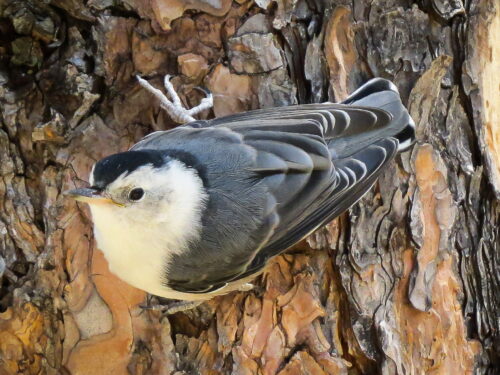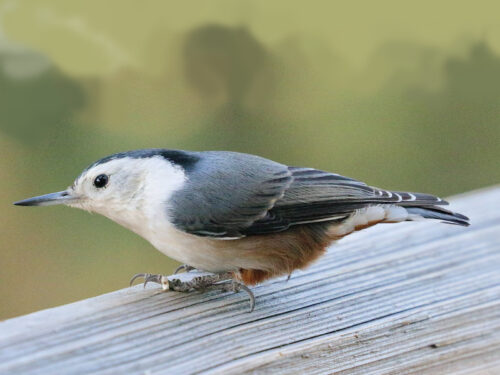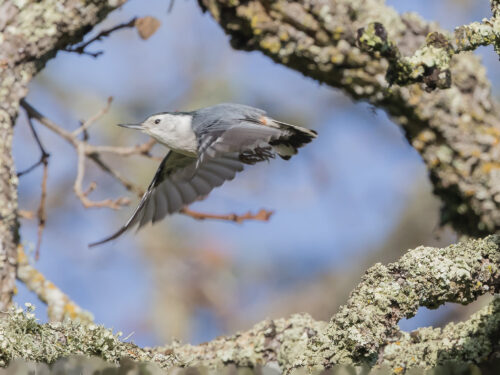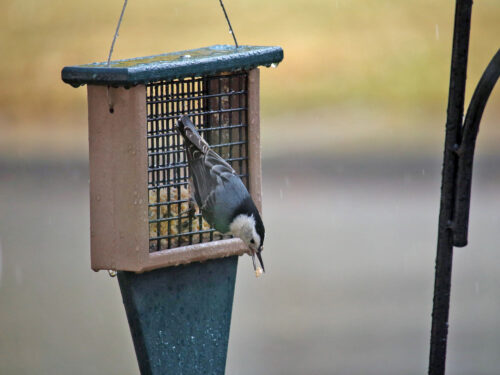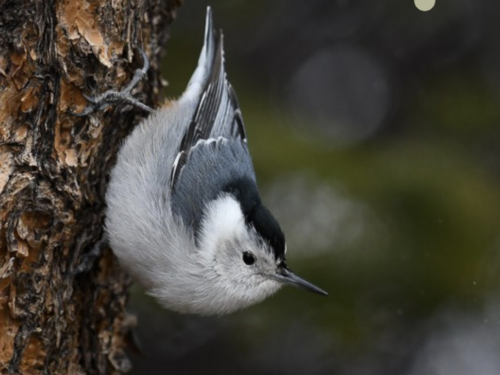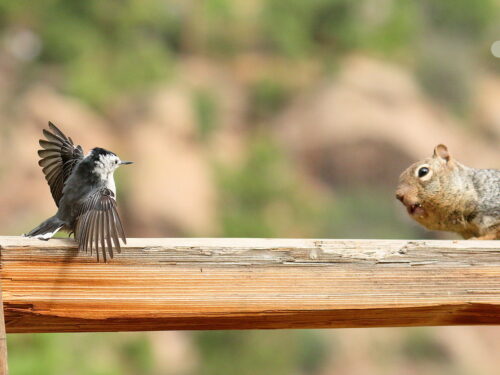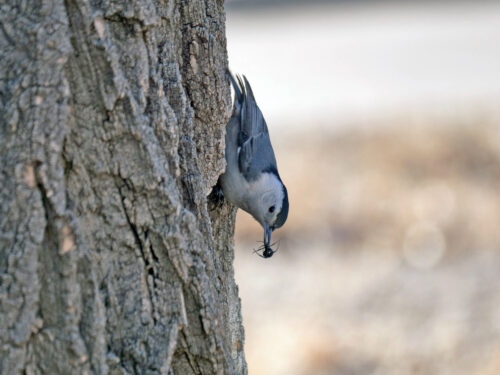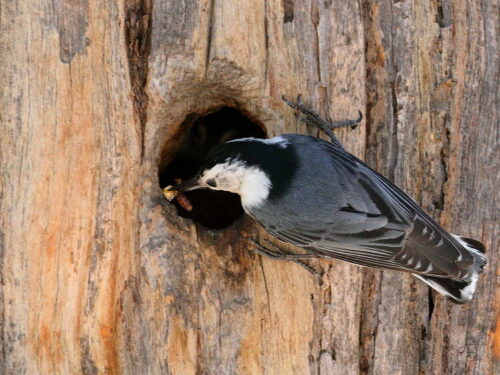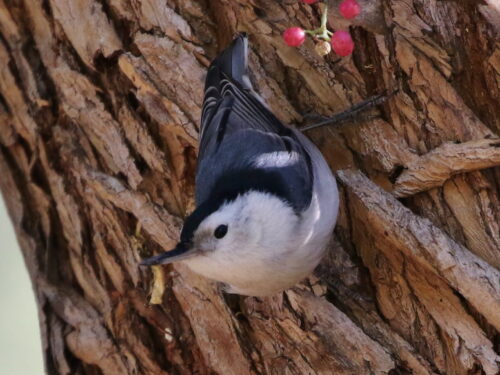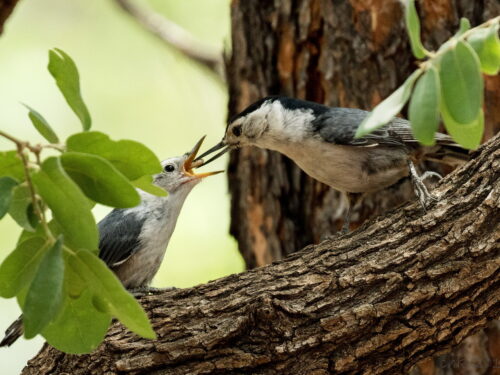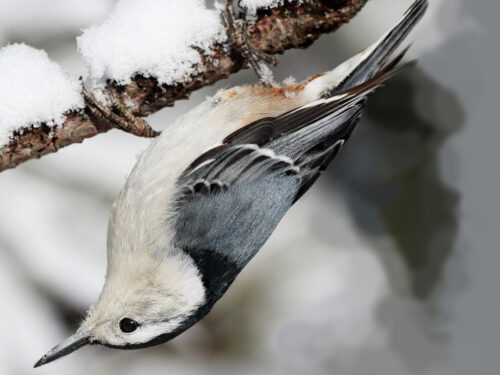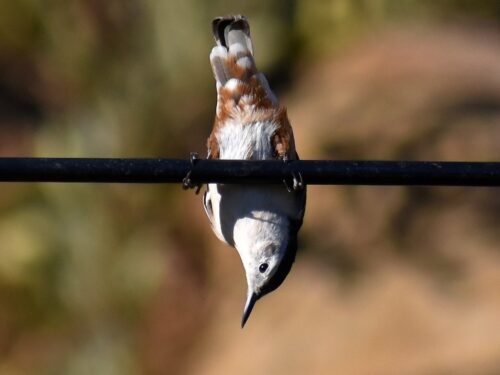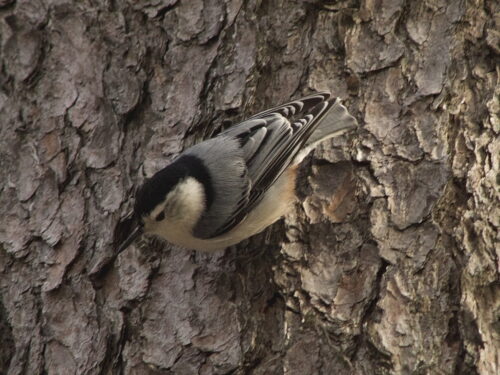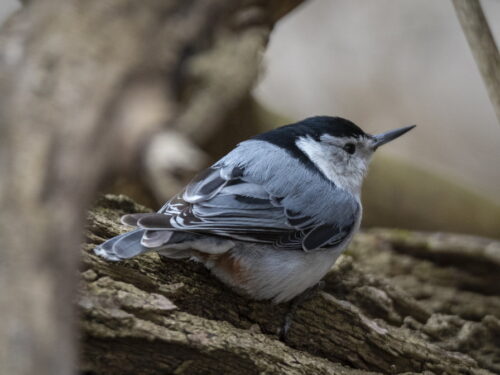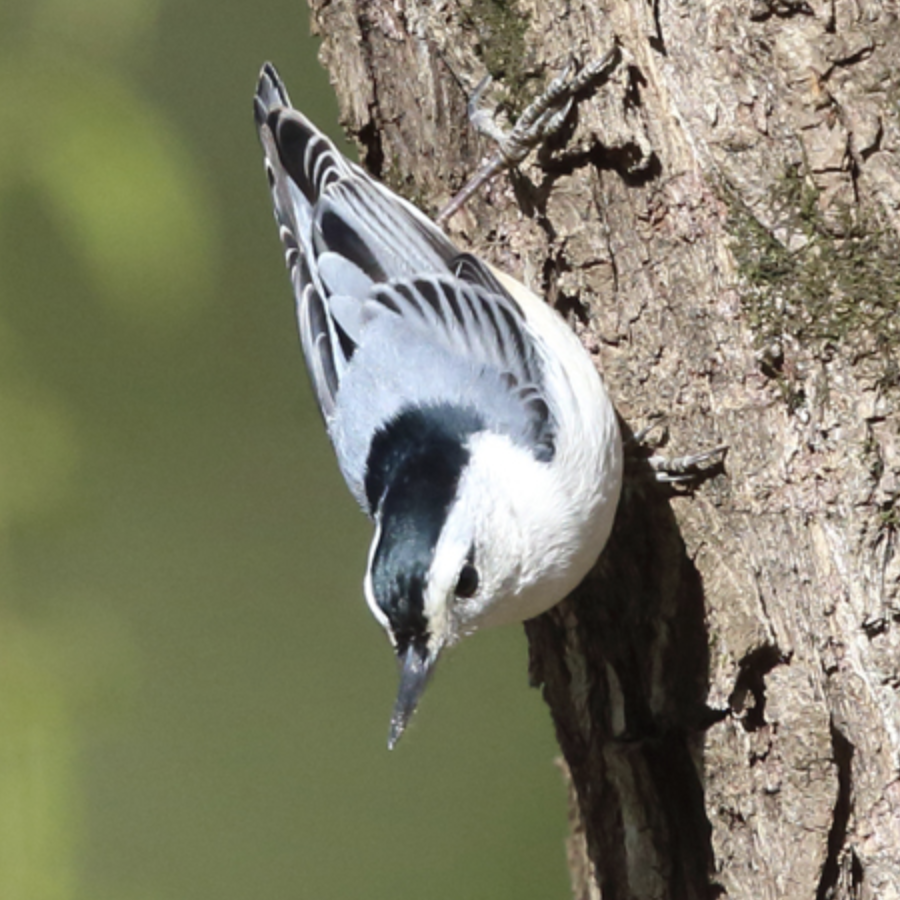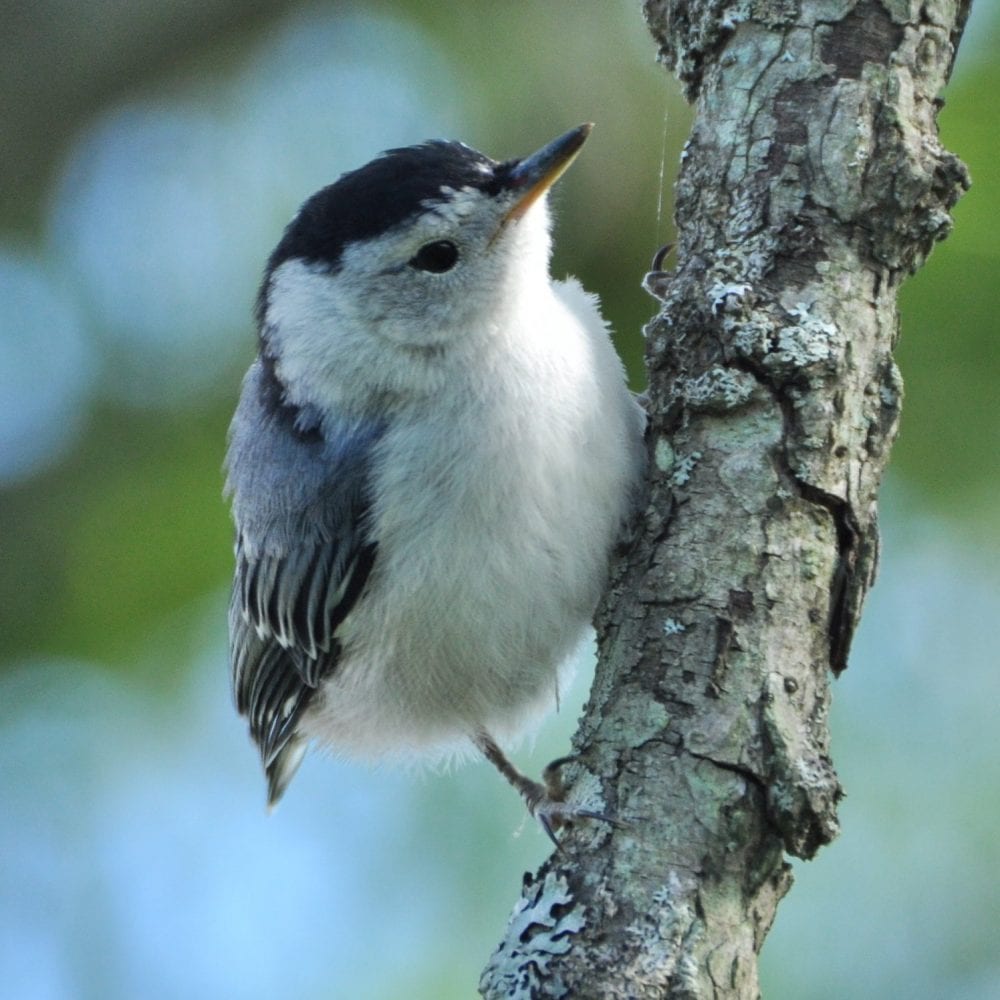White Breasted Nuthatch
Scientific name: Sitta carolinensis
Type: Bird
Family: Sittidae (Nuthatches)
Size: 5.1 to 5.5 inches long; 7.9 to 10.6-inch wingspan
Weight: 0.63 to 1.06 ounces
Life Span: 2 to 3.5 years
Physical Description
White-breasted nuthatches are small, stocky birds with large heads and very little neck. They have a very short tail and a long, narrow bill.
These birds are gray-blue on the back and have a white face, white underparts, and a black beady eye. The lower belly and under the tail is often rusty brown in color. Adult males have a black clap that frames the face. Adult females have a gray cap. Juveniles are similar to adults except they do not usually have any brown in their flanks.
Range and Habitat
White-breasted nuthatches live throughout most of the United States, southern regions of Canada, and central Mexico. They do not migrate and defend a territory year-round.
These birds favor mature deciduous forest and mixed forests with some conifers. They can be found on woodland edges, along roads and clearings, and in suburbs or parks where large trees are present.
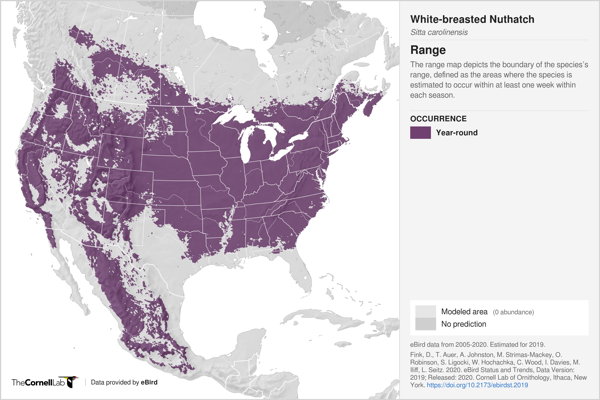
Diet
The white-breasted nuthatch diet consists of seeds, nuts and a variety of insects. In summer they almost exclusively eat insects including including weevils, caterpillars, ants, beetles, scale insects, and wood borers. In the other seasons, there is a sift towards more seeds with two-thirds of their diet being seeds during winter.
Nuthatches are named for their habit of using their bills to pry open large seeds and nuts that they have placed in crevices of trees. They also probe loose bark and crevices for insects and smaller seeds that they have stored there. White-breasted nuthatches are readily attracted to bird feeds for sunflower seeds and suet.
Behavior and Social Life
White-breasted nuthatches are excellent climbers. They mainly forage on tree trunks or large limbs. They move about, probing crevices in the bark for food, often positioned with their head down towards the ground. During warm weather they are looking for insects, during fall and winter, seeds that they have cached for later retrieval either the same day or for first thing in the morning.
White-breasted nuthatches communicate visually and vocally. Males sing in late winter and early spring with a short wha-wha-wha sound. Both sexes use a loud, nasal sounds for calling between each other. Other calls are used mostly for territorial defense.
White-breasted nuthatches are monogamous. A mated pair will defend a single territory throughout the year. The female rarely strays far from her mate and the two stay in constant vocal contact. When their nest is confronted with a predator, the pair will begin pecking and flicking their wings while making loud noises.
Life Cycle
Courtship behavior which occurs in late winter consists of the male spreading his tail, dropping his wings, swaying back and forth, and bowing. The female builds a nest of bark fibers, grasses, twigs, hair, and sometimes mud in a cavity.
The female lays and incubates 5 to 9 white eggs that are spotted with reddish-brown. The male feeds the female during this period. The eggs hatch in 12 to 14 days. Both parents feed the young until they are ready to leave the nest at sometime up to 3 weeks later. There is one brood per year.
Nest
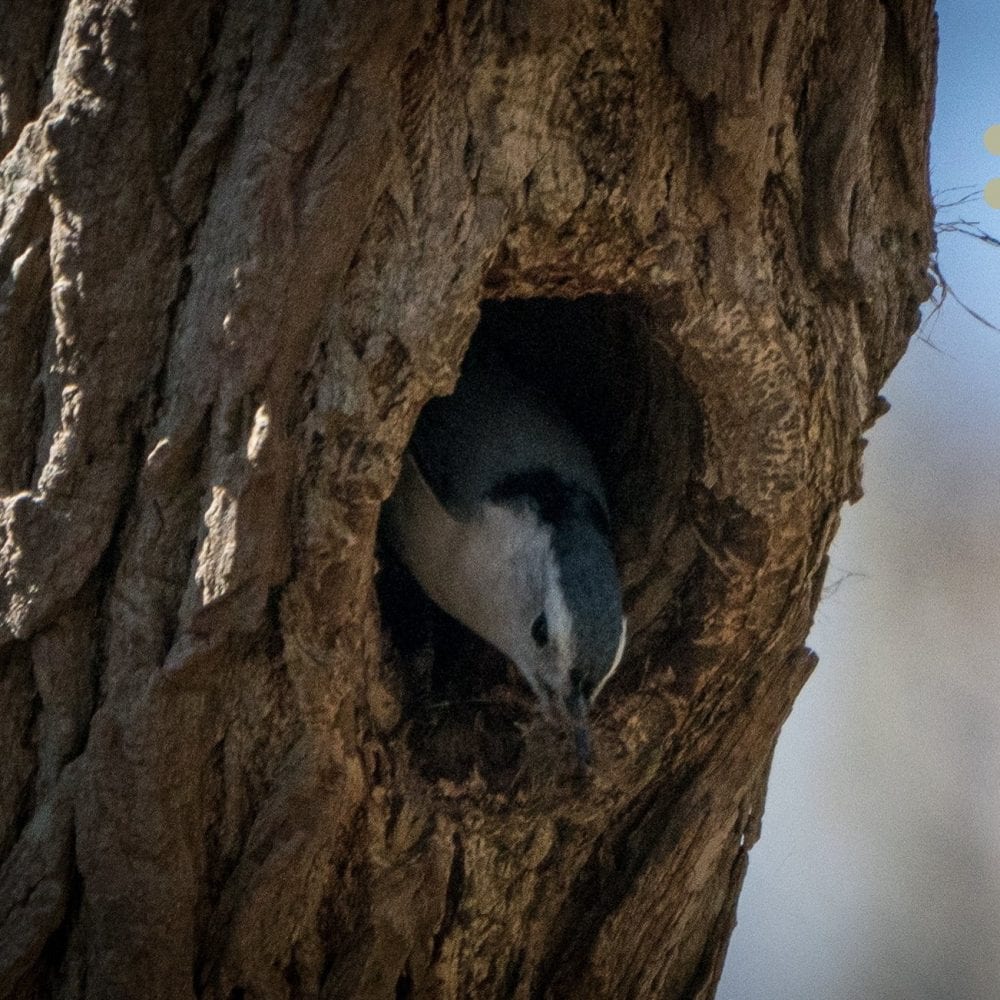
Macaulay Library ML321742031
Eggs
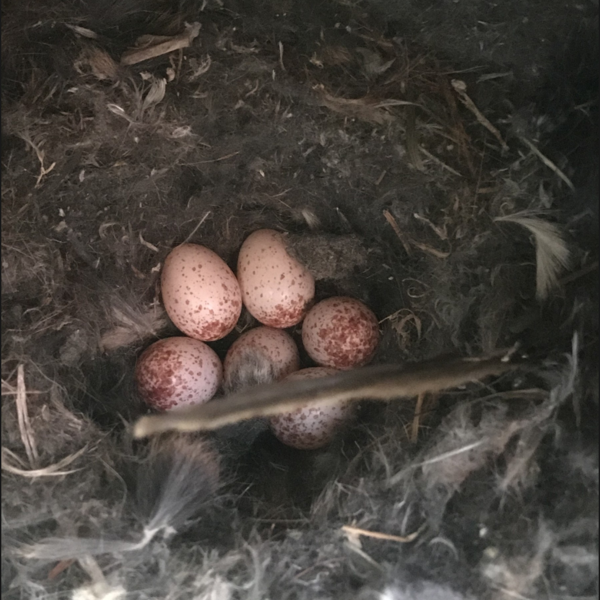
Macaulay Library ML318891381
Nestlings
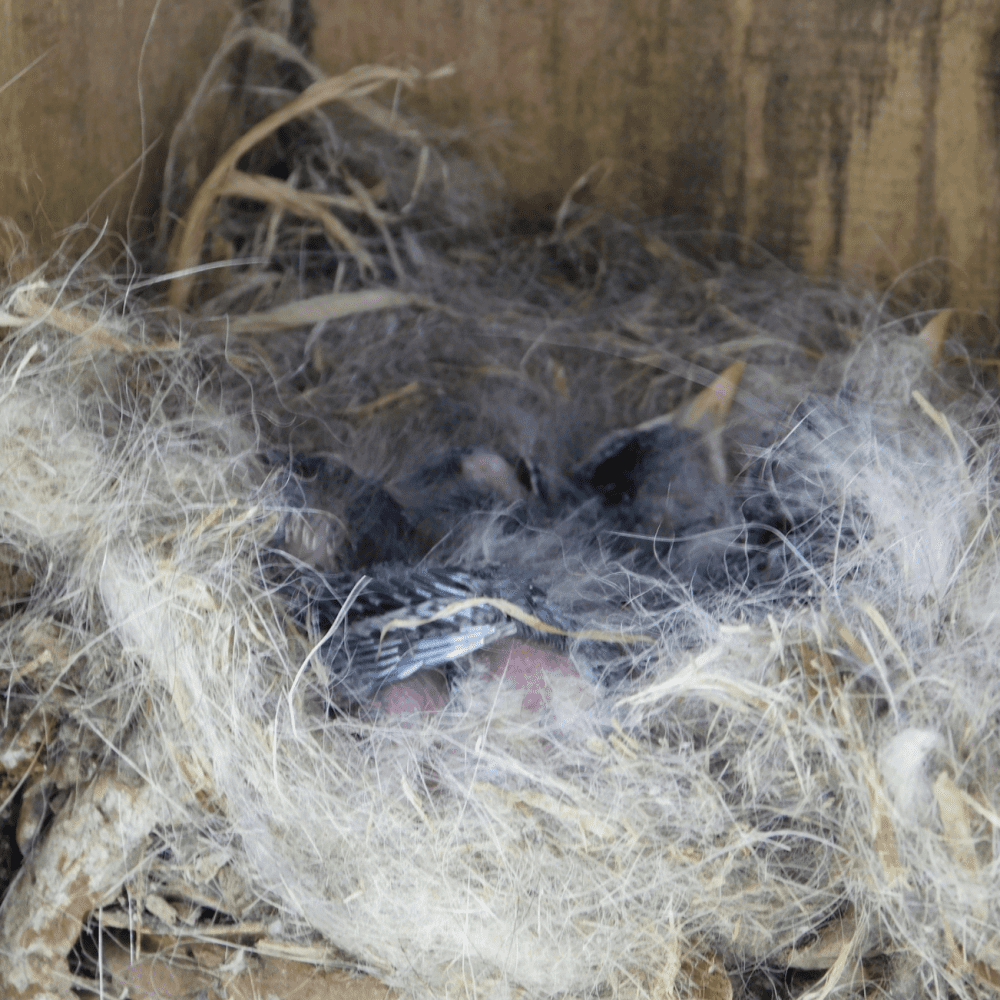
Macaulay Library ML238230091
Young Bird
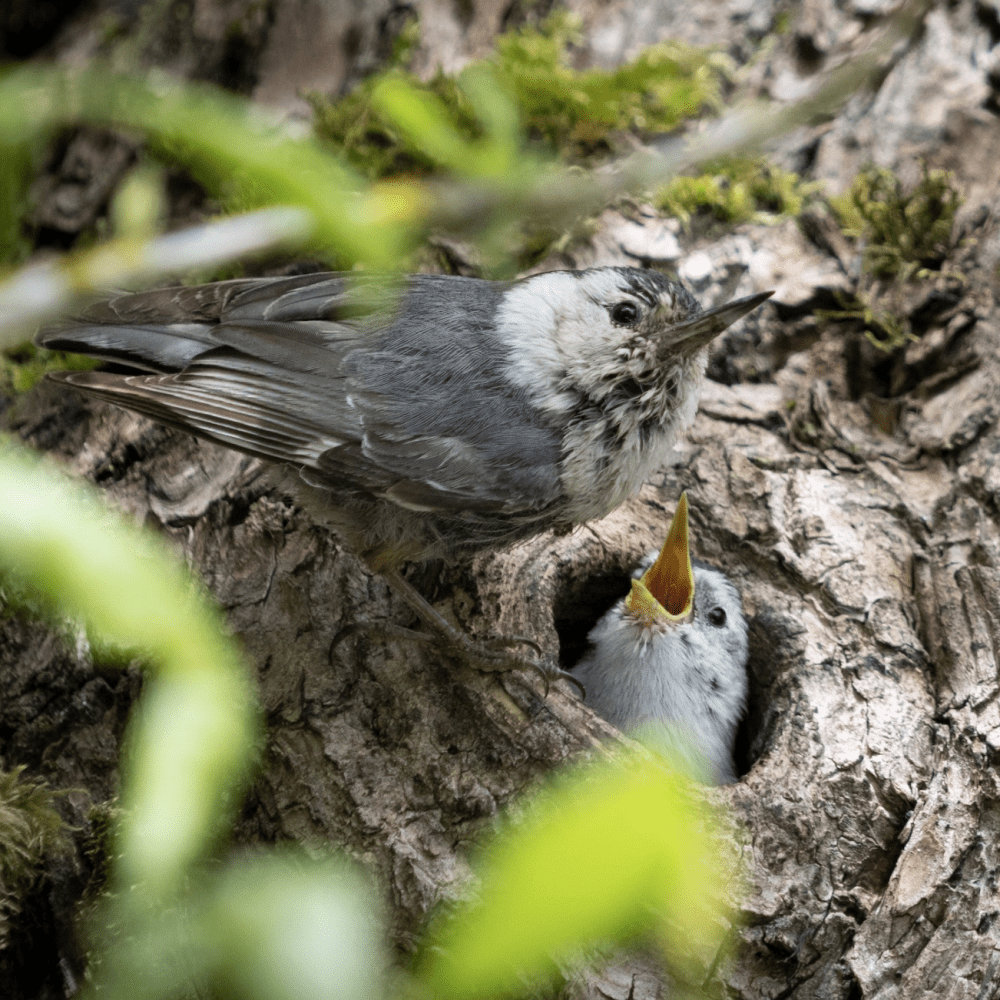
Macaulay Library ML242295351
Ecological Role
White-breasted nuthatches are important in controlling insect populations in summer and for dispersing plant seeds throughout the year.
Hawks and owls are the main predators of the adult nuthatches. Whereas woodpeckers, squirrels, and climbing snakes eat nestlings and eggs.
Interactions With Humans
White-breasted nuthatches do not, in general, interact with humans. However, they are considered to have a positive affect as they are responsible for eating insects considered pests.
Interesting Facts
- The white-breasted nuthatch are also known as the “upside down” bird, for its ability to creep headfirst down tree trunks.
- A nuthatch’s can walk head first down a tree due to its feet which have one toe facing forward and three facing backward.
- White-breasted Nuthatches can be very loud.
- They live in pairs year-round.
- The name nuthatch is probably a variation of the work “nuthack” referring to the bird’s habit of hacking away at seeds.
- When a white-breasted nuthatch visits a bird feeder, it will take a single sunflower seed and fly away with it to a nearby tree to crack it open.
- It has been found that white-breasted nuthatches prefer unshelled sunflower seeds to those still in the shell.
- During winter, white-breasted nuthatches will forage on the ground in a forging guild with birds of other species.
- Nuthatches are bolder when foraging with chickadees and woodpeckers then when foraging on their own.
- Males are less nervous foraging with their mates. The mates act as a “watchdog”.
- A breeding pair may smear insects or fur around their nest opening to cover up their scent to deter squirrels and other predators.
- A typical wooded nuthatch territory is 0.03 to 0.05 square miles; territories in partially wooded areas are twice as big.

